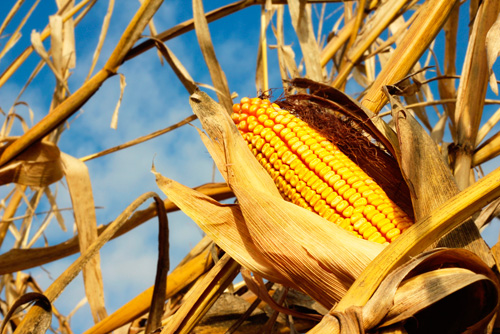Finding Hard Maize Grains from an Image
Submitted by ianm on 25 September 2012 - 12:32pm
A novel near infrared (NIR) spectroscopy imaging technique can determine the hardness of maize (corn) grains without destroying them, says a new paper* in JNIRS—Journal of Near Infrared Spectroscopy. This new technique could offer food processors huge savings in time and money compared to other methods for determining grain hardness.
“The advantages of imaging using NIR are substantial and include low cost per sample, more rapid analysis and the ability to operate in a number of in-field or on-line/at-line environments,” explains senior author Marena Manley, professor in food science at Stellenbosch University in South Africa. “The benefits lead to savings in laboratory costs and gains in product value.”

Maize is an internationally important food crop, but for many food uses the maize grain, or kernel, needs to have a specific hardness. For example, food products such as corn flakes and maize meal require a comparatively hard maize kernel; kernels that are too soft can result in huge losses for a food processor.
Current methods for determining maize hardness destroy the samples, making them costly and time-consuming. In a paper just published in a special issue of the Journal of Near Infrared Spectroscopy, Manley and her co-author Cushla McGoverin report that a novel analytical imaging technique called NIR hyperspectral imaging (NIR-HSI) offers a non-destructive way to measure the hardness of maize kernels.
The kernel is made up of different parts of which the largest, the endosperm, can be hard or soft, and it is well known that the proportions of the different types of endosperm give an indication of the overall hardness of the kernel. In the paper, McGoverin and Manley show that NIR-HSI can be used to measure the proportions of these different types of endosperm, and that these proportions are directly related to kernel hardness. This potentially holds huge advantages for the maize milling industry, as NIR-HSI can measure the hardness of kernels in moving samples in just a few seconds.
“Irrespective of whether the large germ of the maize kernels was facing towards or away from the NIR camera, the endosperm ratios could be predicted at an acceptable accuracy,” says McGoverin.
Manley and McGoverin’s paper is just one of 11 papers in the current, special issue of JNIRS—Journal of Near Infrared Spectroscopy dedicated to NIR imaging. The issue is essential reading for anyone who needs a picture of what is inside something without destroying it.
“It is our hope that this special issue will encourage expansion of imaging NIR to medical, pharmaceutical, food, timber and other users of NIR spectroscopy”, says Guest Editor Professor Gerry Downey from the Ashtown Food Research Centre in Dublin, Ireland.
*The research is published as Cushla M. McGoverin and Marena Manley, “Classification of maize kernel hardness using near infrared hyperspectral imaging”, J. Near Infrared Spectrosc. 20(5), 529–535 (2012), doi: 10.1255/jnirs.1018